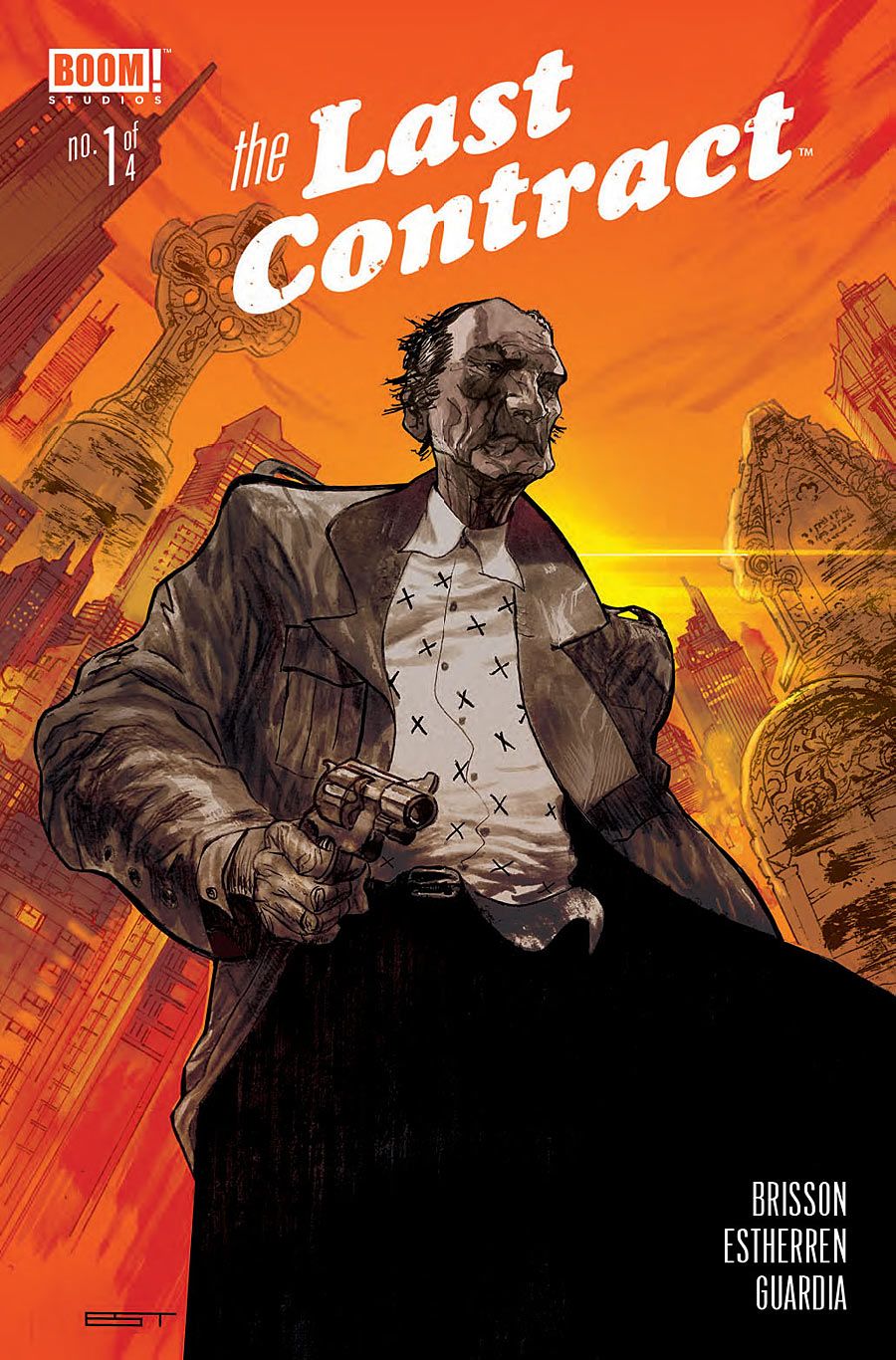In Ed Brisson and Lisandro Estherren's "The Last Contract" #1, a hitman is reluctantly pushed out of retirement by an unknown enemy from his past. If this sounds familiar, that's because it is, as the debut issue follows a list of common tropes found in similar works like "Retired Badass" and "One Last Job."
The action is usually gripping, even if the arc has few surprises. The first scene, in which The Man rambles off in the middle of a sentence, sets up the impression of his impending senility so convincingly that the inevitable home invasion that follows has plenty of tension in it.
The dialogue and action are less believable in the middle third of the comic, when The Man locates Burrell. Burrell's hapless yammering on the phone is unrealistic, and so is a stabbing in a street full of other people. The pages with Burrell and The Man are thick with text, and the interrogation feels like it's rushing through the exposition. The pace of the story slows to accommodate this information dump, albeit temporarily.
The characters aren't boring, but they are cookie-cutter. The hero and the villains walk and talk so stereotypically that the supporting cast is the most memorable part of "The Last Contract" #1. The basset hound, Harvey, is an amusing addition to a hitman's entourage. However, the final scene and cliffhanger bring in another character who will probably end up being the dopey, young foil to The Man's shrewdness in his dotage.
Estherren's action scenes are fluid and his pacing is strong. His stylized linework exaggerates The Man's wrinkles and withered physique, so that he almost looks dead already in his pallor and the deflated-balloon texture of his skin. The effect is startlingly ugly but also reinforces the age and supposed decrepitude of the main character.
The characters are not attractive (and aren't meant to be) in "The Last Contract" #1, so Estherren shows his skills for beauty and balance in the backgrounds. The spacing and curves of the bar stools on the first page make them look like long-stemmed flowers growing out of the checkered tile floor. The delicate shapes of stones on a path in the yard are beautiful. Estherren's shading has impressive variation of technique, with watercolor-like marks mixing with brushy smudges and rows of thick, marker-like stubble.
Niko Guardia blankets the whole issue in shades of milky blue and purple, with accents of bright pink. It looks best in the scene with the city's skyline, but -- during most of "The Last Contract" #1 -- the lack of variation and creativity in hue choices don't do justice to Estherren's background details. On the other hand, the colors also don't fight the story's tone and atmosphere.
"The Last Contract" #1 is fast-paced and enjoyable, but the story hews too closely to convention to make the story stand out among others of its type.

